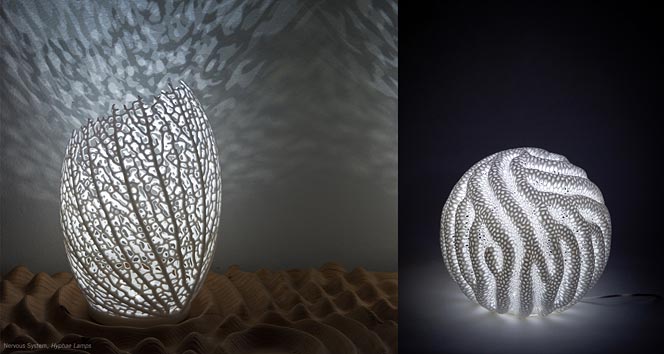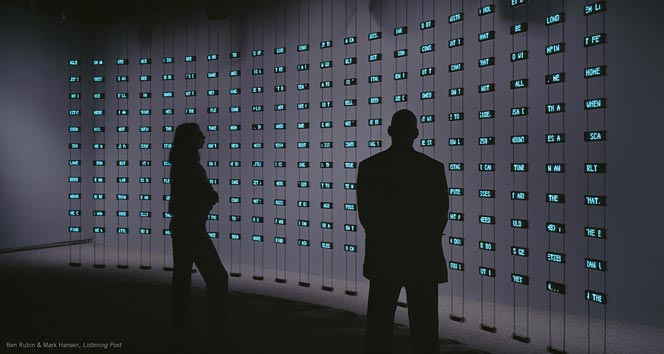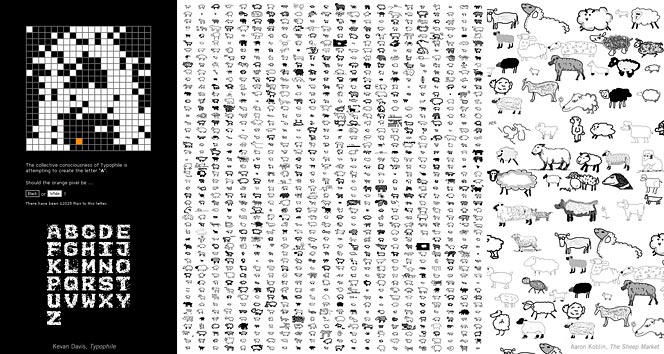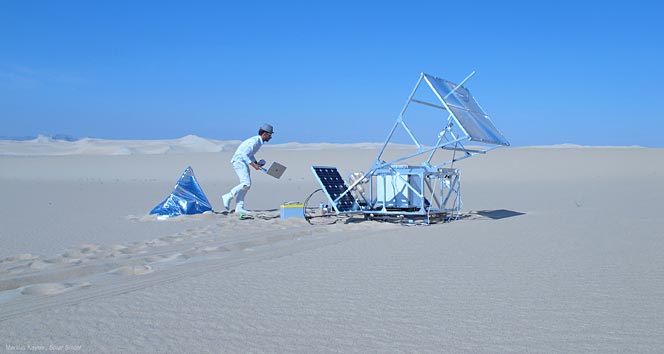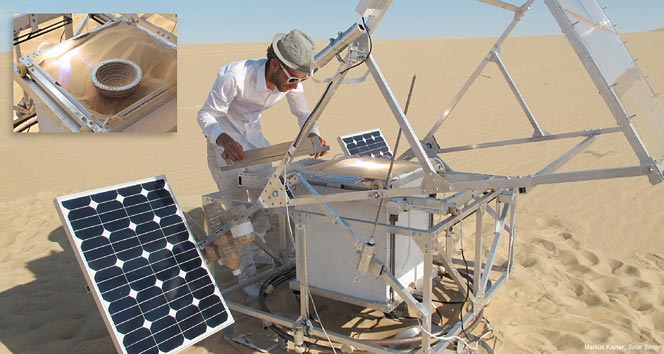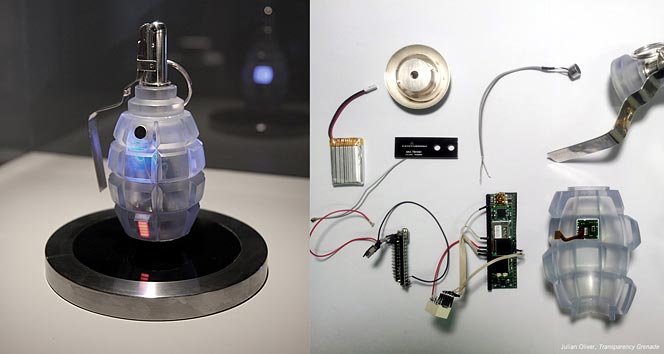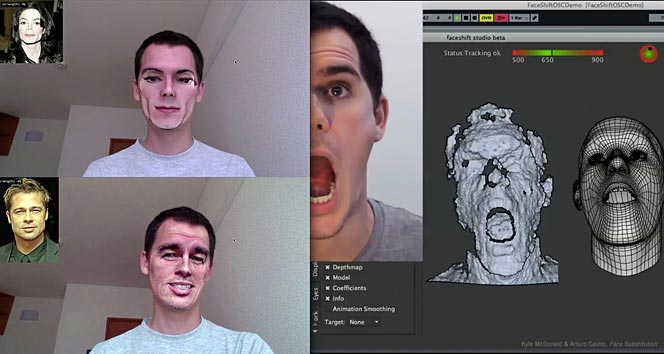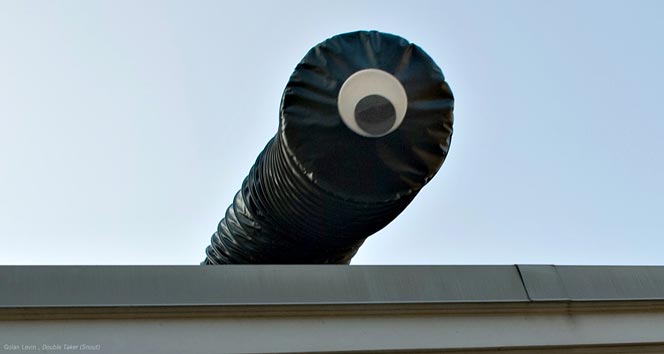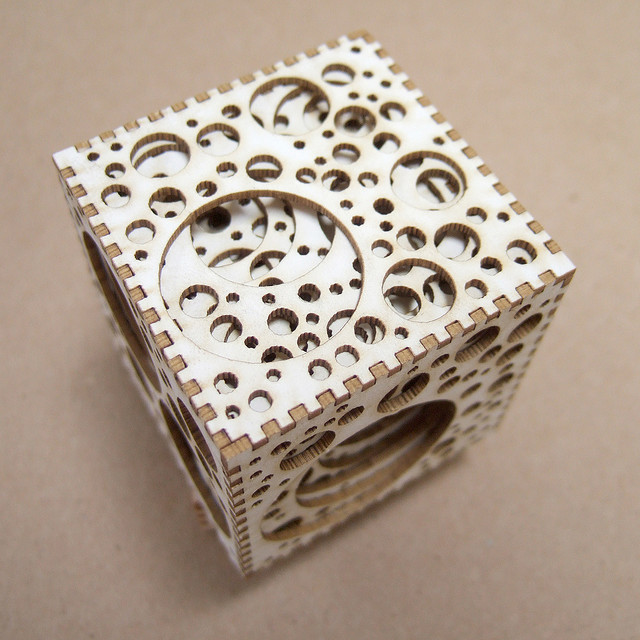Two weeks ago, at the World Economic Forum’s “Annual Meeting of the New Champions” event in Tianjin, China, I delivered a brief presentation as part of a session on “Computing and Technology: A Springboard for the Human Mind” (yes.. that’s me in a suit). My presentation was structured according to a variant of the popular (if somewhat tyrannical) Ignite or Pecha-Kucha formats — in this case, 15 slides, 20 seconds per slide — and was entitled, “Radically Local: Personal Fabrication and Future Economies.”
Then, earlier this evening, I came across Anab Jain‘s fantastic presentation from the Global Design Forum, “Design for the New Normal“, which she posted on her blog. By coincidence, Anab’s presentation mentioned a few of the same projects as I did in my lecture — such as the world’s first 3D printed gun, and my Free Universal Construction Kit. Clearly, we had been following similar news, and extrapolating similar conclusions from these trends. Inspired by Anab’s example, and in the spirit of this coming weekend’s World Maker Faire, I decided to likewise share my WEF presentation.
Below are the images and narration texts from my presentation. Please note that the language is extremely terse, as each paragraph has been written to fit within 20 seconds. This time limit necessarily makes it difficult to give appropriate acknowledgements while speaking, so where possible I have put credits in the images themselves and in links.
If you work in the Maker community, my presentation below will probably not surprise you. Indeed, Bre Pettis and Neil Gershenfeld have been passionately articulating and advocating the ideas expressed below for much longer than I. My function at the WEF was primarily to bring these ideas to an unfamiliar audience.
Radically Local: Personal Fabrication and Future Economies
World Economic Forum: Annual Meeting of the New Champions
Golan Levin, 12 September 2012, Tianjin, China
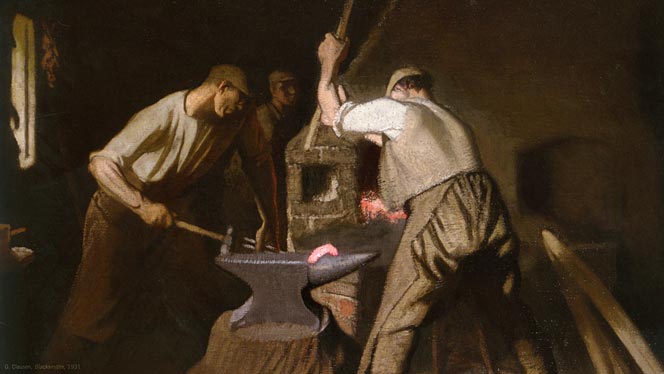
Good afternoon.
I’d like to talk about a revolution taking place, called “Commons-Based Peer Production”.
It’s a revolution in how things are made, by whom, and in what quantities.
In some ways, the future looks a lot like the past.
These blacksmiths are making a local solution to a local problem.
And we’re going to be seeing a lot more of that.
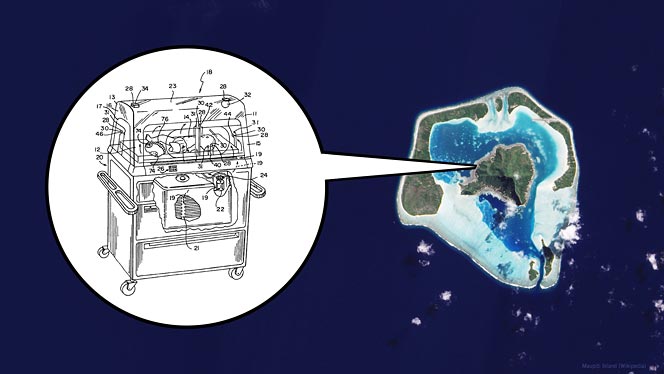
Life was simple when all you needed was a new horseshoe.
But suppose your hospital’s incubator needs a new valve, and you live on a remote island?
The answer is “personal fabrication”.
We’re looking at a future in which you’ll download and create whatever you need,
right at your own desk. Manufacturing and shipping are about to change completely.
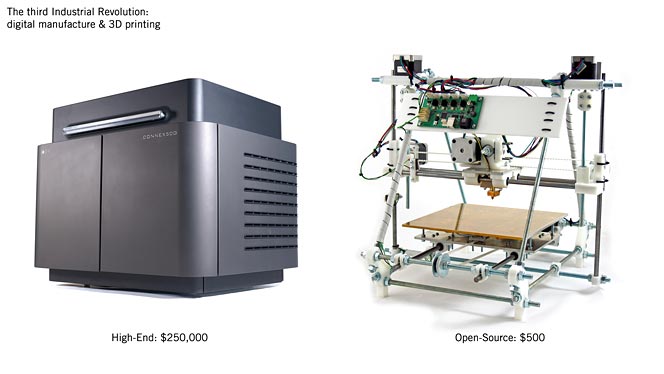
This revolution arises from the collision of 3D printers, with the Internet.
3D printers can create any plastic object from a 3D model – they “turn ideas into objects”.
Professional machines can cost nearly a quarter-million dollars.
So about six years ago, hackers and activists joined up to design one they could afford.
They designed RepRap, an open-source 3D printer that anyone can build for around $500.
A RepRap can even print another RepRap!
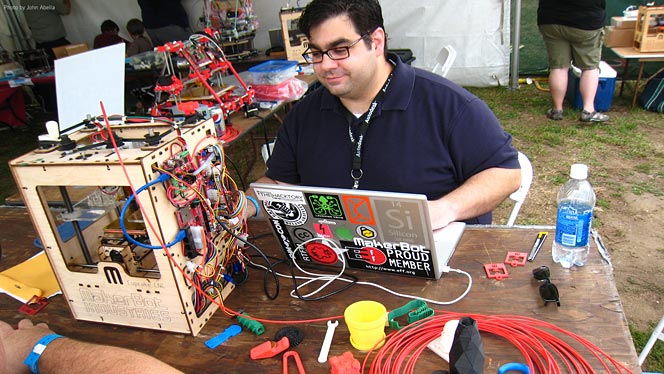
John is your “new blacksmith”. He can make practically anything.
He downloads 3D models from a free web site;
If he doesn’t find what he wants, he designs it himself – and shares it back.
He’s an early-adopter in something called the Maker movement:
a community dedicated to helping people create, rather than just consume.
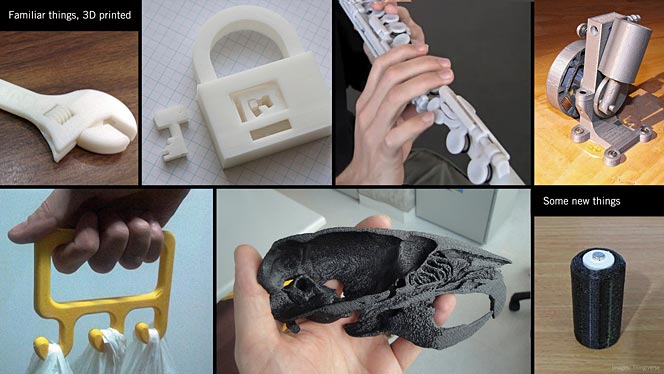
Makers are using 3D printers to create – and share – all sorts of things.
Across the top row: a working wrench; a padlock; a flute; and a steam engine.
At the bottom, are some new things people have designed, just for themselves:
A bag holder; a model of an animal skull; or a size adapter for batteries.
The “killer app” for 3D printers? is “things for a market of one“.
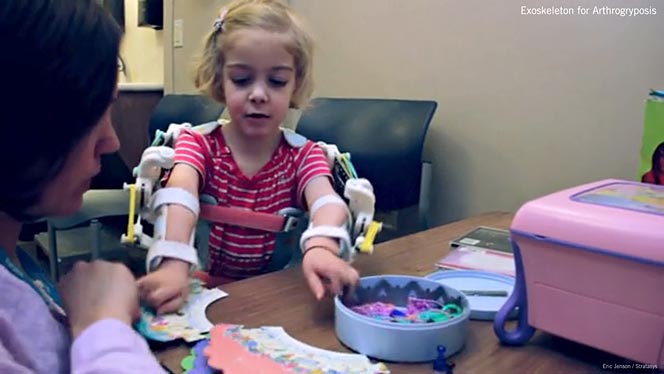
And here’s such a one. 3D printing has enormous potential to help people.
3-year old Emma has extremely weak muscles from arthrogryposis.
With her custom “magic arms”, she’s finally able to pick things up.
If she outgrows them, or if something breaks,
Her mom could just print out a new piece.
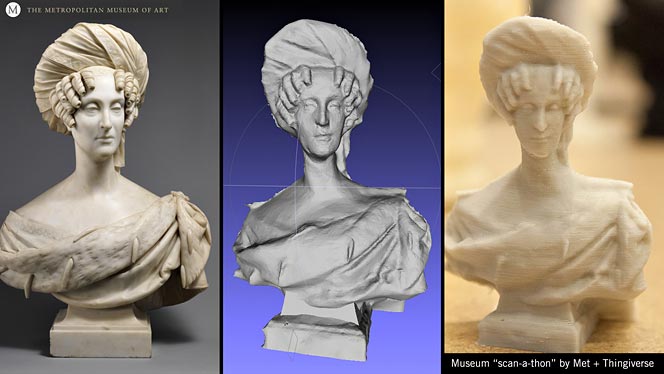
The important thing is not just 3D printers,
but the open-source culture and gift economy surrounding them.
The Metropolitan Museum in New York “gets” the educational potential of this.
They invited museum visitors to come and scan their sculptures.
People made 3D models with regular cameras – and, – free software.
The museum has given free access to these models online.
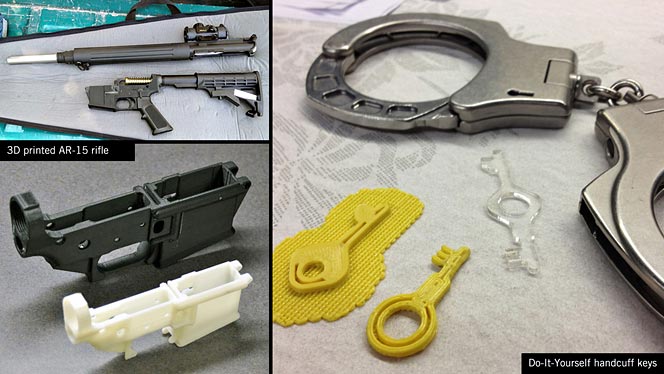
Ah yes, — we have access.
Networked fabrication has some scary implications,
for otherwise restricted goods.
For example, a hacker recently showed the use of a 3D printer
to make working, plastic copies of standard handcuff keys.
Likewise, someone else used free 3D models, and $30 of plastic,
to print a functional AR-15 rifle.
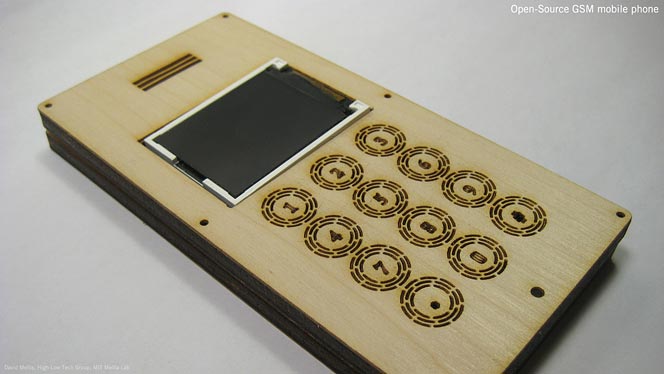
But the Maker movement is more than just mischief with 3D printers.
Here, – is a working, open-source DIY mobile phone.
The design is free; it costs 150 dollars to build.
It was designed by a single student, using tools from the commons, as a gift to the commons.
Both design and production are democratized.
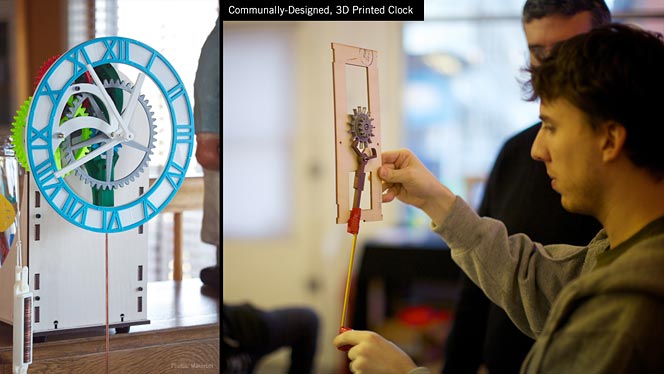
The Maker revolution doesn’t just enable individuals, but crowds as well.
For example, here’s a clock created by the Internet.
Dozens of people from around the world made contributions to its design.
People are sharing designs like this, the same way they’re sharing music.
But they’re also improving them as they go,
tuning these solutions to local conditions.
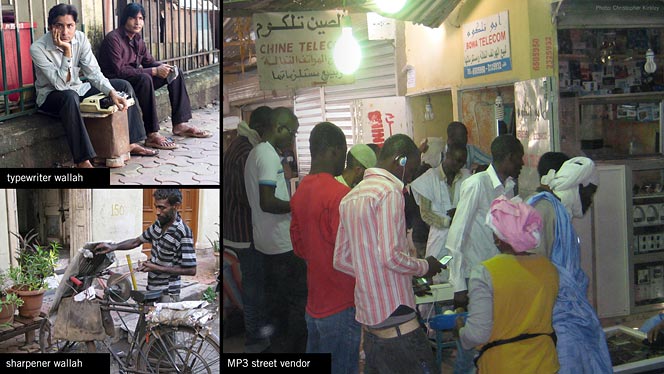
You may be familiar with the concept of the Wallah, a single-purpose street craftsman.
There are wallahs who copy keys, fix shoes – anything you can imagine.
Here’s a knife-wallah, who sharpens knives with his bicycle;
Or a typewriter-wallah, who’ll type any letter you need.
Of course, other kinds of Wallahs have electricity and computers;
Here’s one for MP3’s – he’ll copy any song you want for 10 cents.
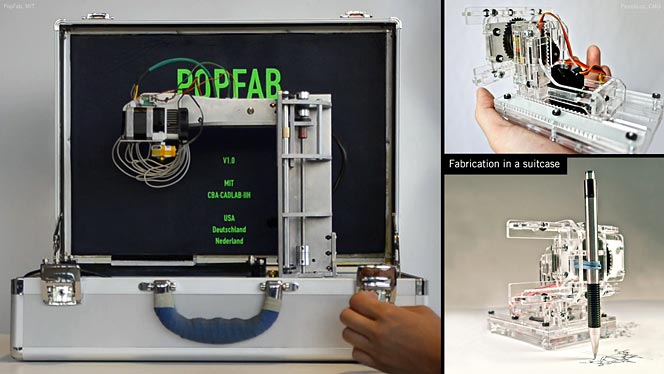
Someday soon, there’ll be a 3D-Printing Wallah.
And they’ll probably use something like the machines shown here.
On the left is a machine that does 3D printing, milling, and cutting – it fits in a suitcase.
A related machine, whose design is open-source, fits in your palm.
It costs $70 to make.
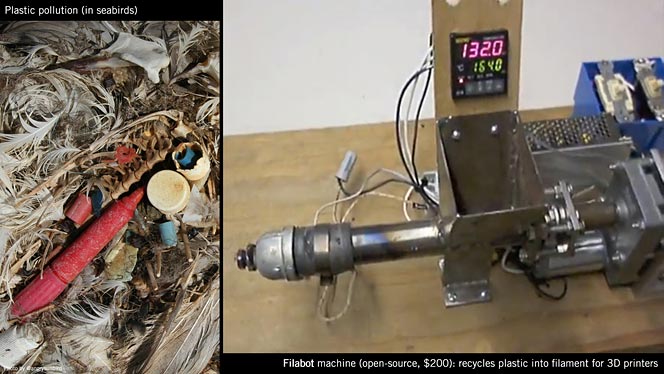
In these scenarios, plastic is both a problem and an opportunity.
New plastic for 3D printing is expensive – and will probably get more so,
after Peak Oil. Old plastic ends up as pollution in our oceans.
So some Makers are designing low-cost, open-source recycling machines,
that turn old plastic into feedstock for 3D printers.
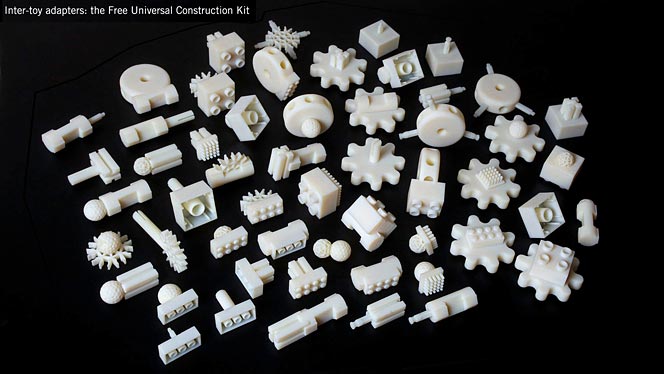
I’d like to conclude with a project of my own, the Free Universal Construction Kit,
Which I made for my son. This is a set of adapters that allows complete interoperability
between 10 popular construction toys, like Lego and Tinkertoys.
The value to children should be obvious.
But of course, no company could ever hope to produce these –
it’s a legal nightmare!
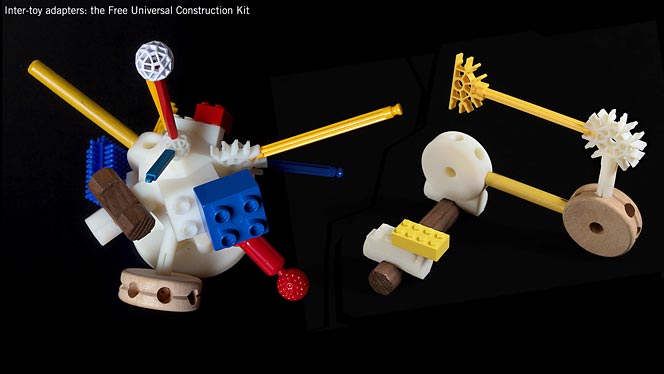
Happily, anyone with a 3D printer can download the files
and produce a copy for themselves. With this project,
I hope to demonstrate this Maker idea of engineering as a civic activity:
In which everyday people use new tools, to create local solutions to local problems,
and creatively overcome the limitations of mass-produced culture.
Thank you.
Thanks to those artists, hackers, entrepreneurs and others who kindly gave permissions for the use of their images, and/or made their images available online with Creative-Commons licenses.















